Ormskirk, Lancashire
Up to 1834
Ormskirk's first workhouse dates from 1732 (Hitchcock, 1985). A parliamentary report of 1777 recorded local workhouses in operation in Ormskirk (for up to 114 inmates), Aughton (114 inmates), and Melling with Cunscough (50 inmates).
Ormskirk's workhouse was on Moor Street at the east side of the junction with what is now St Helen's Road.
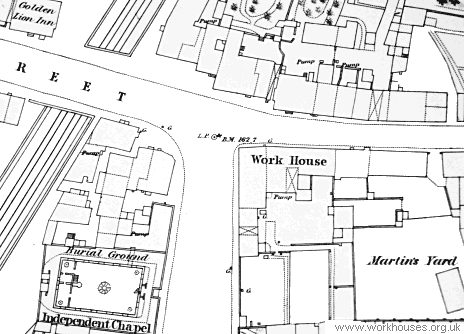
Ormskirk Moor Street workhouse site, 1849.
The Melling with Cunscough workhouse may have been what is shown on the 1848 map as Poor Houses just to the north of Kirkby Station.
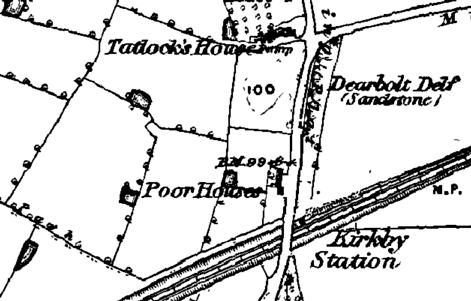
Melling Poor Houses site, 1848.
After 1834
Ormskirk Poor Law Union formally came into being on 31st January 1837. Its operation was overseen by an elected Board of Guardians, 24 in number, representing its 21 constituent parishes and townships as listed below:
County of Lancaster:
Altcar, Aughton, Bickerstaffe, Birkdale, Bispham, Burscough, Down Holland, Formby, Halsall, Hesketh with Becensall, Lathom, Lydiate, Maghull, Melling, North Meols (2), Ormskirk (3), Rufford, Scarisbrick, Simonswood, Skelmersdale, Tarleton.
Later Additions: Ainsdale (1894-1925), Southport (1894-1930).
The population falling within the union at the 1831 census had been 30,568 with parishes and townships ranging in size from Bispham (population 256) to Ormskirk itself (4,251).
A new Ormskirk Union workhouse was built in 1851-3 on a site at the south side of the Wigan Road in Ormskirk. It was designed by William Culshaw who was also the architect of much larger workhouses for the Toxteth Park and West Derby Unions. His design for Ormskirk was based on the cruciform layout that had been popular in the peak workhouse building period of 1835-8. The workhouse location and layout are shown on the 1908 map below.

Ormskirk workhouse site, c.1908
The two-storey entrance block stood facing the road at the north.
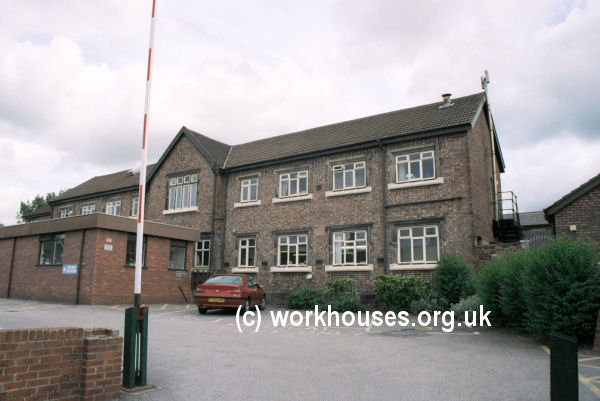
Ormskirk front block from the north-west, 2001.
© Peter Higginbotham.
To the rear, four wings radiated from the central octagonal hub. Broadly speaking, males were housed at the west side of the workhouses and females at the east.
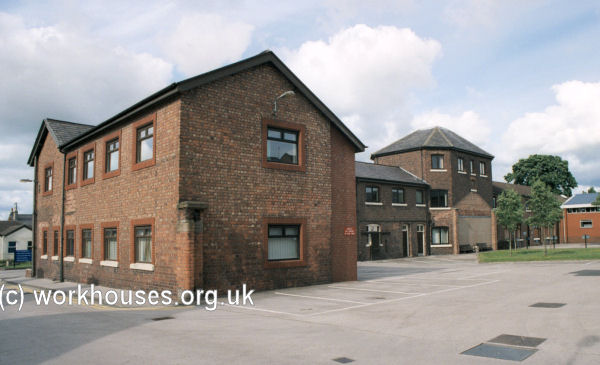
Ormskirk west and east wings and central hub the south-west, 2001.
© Peter Higginbotham.
A separate detached block lay to the south-west of the main building.
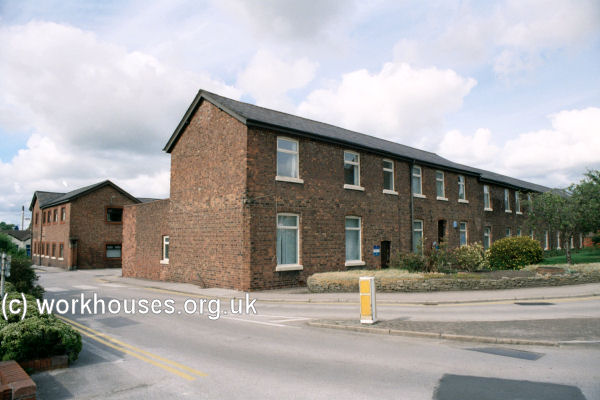
Ormskirk general view from the south-west, 2001.
© Peter Higginbotham.
The workhouse provided a night's accommodation for passing vagrants, referred to as 'casuals'. Separate male and female casual wards were placed alongside the main road, either side of the entrance block. Children were originally housed in a block to the east of the entrance block. A nursery was provided in the north wing of the main building.
In 1898, a new guardians' boardroom and union offices were erected to the west of the workhouse.
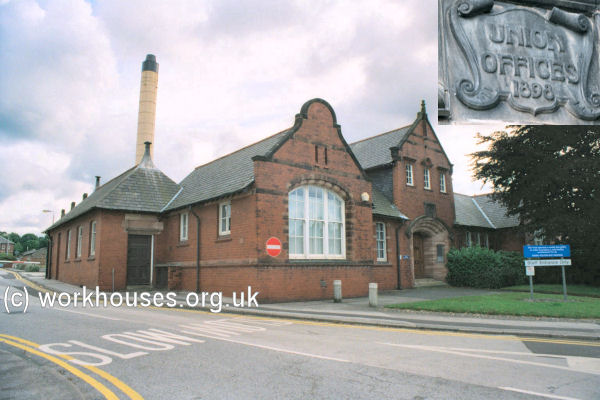
Ormskirk Union offices from the north, 2001.
© Peter Higginbotham.
Separate pavilions for male and female 'idiots' and 'imbeciles' were erected at the south-east of the main workhouse. Each was enclosed within its own perimeter wall.
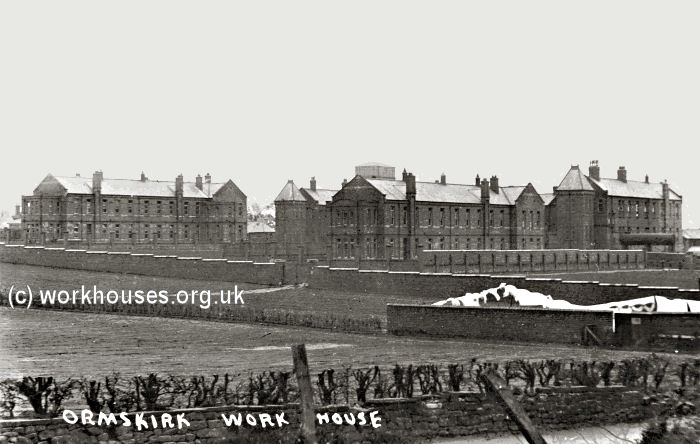
Ormskirk workhouse male mental ward (left) and female (centre), with infirmary at rear, from the south-east, early 1900s.
© Peter Higginbotham.
In 1930, the site was taken over by Lancashire County Council. The main workhouse nuilding became a Public Assistance Isntitution and the medical facilities formed Ormskirk County Hospital. The site later became the Ormskirk and District General Hospital. Major new buildings erected just to the south-west of the workhouse site, while some of the old workhouse buildings survive, now housing ancillary and administrative services.
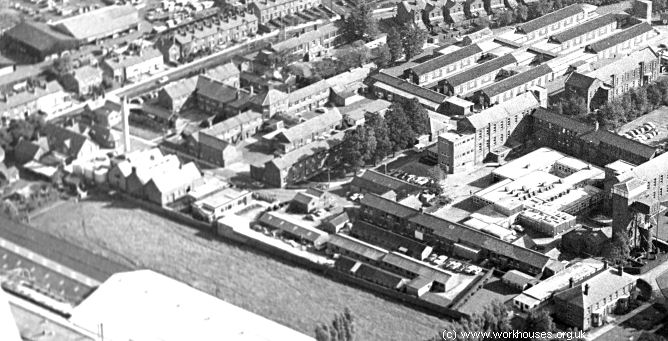
Ormskirk General Hospital from the south-west.
© Peter Higginbotham.
Industrial Schools
In December 1886, the union opened children's homes and industrial schools at a site on Dicconson Street (now Wigan Road) about a quarter of a mile to the east of the workhouse. The establishment, which provided accommodation for around 100 children, was officially opened by the chairman of the guardians, Mr Roper, on Saturday 4 December, with 70 children marching there from the workhouse.
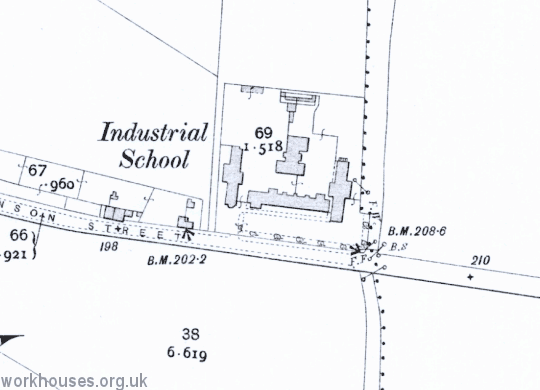
Ormskirk Union Industrial Schools site, c.1908
From 1917 to 1919, the building was used as a military hospital, as an annexe to Lord Derby's Red Cross Hospital in Warrington. In 1920, the premises were sold to Lancashire County Council and converted for use as a school, later becoming Ormskirk County Secondary School. The building no longer exists.
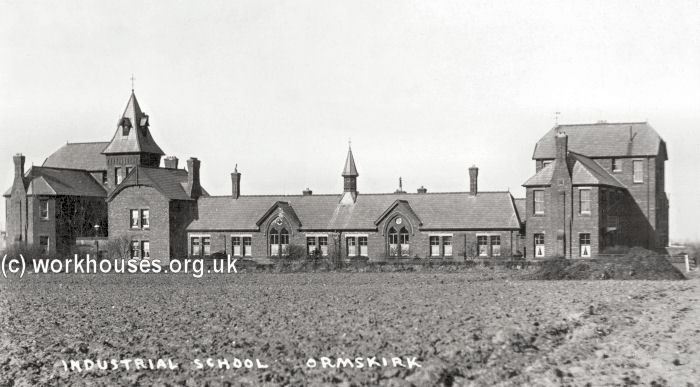
Ormskirk Union Industrial Schools from the south, c.1910.
© Peter Higginbotham.
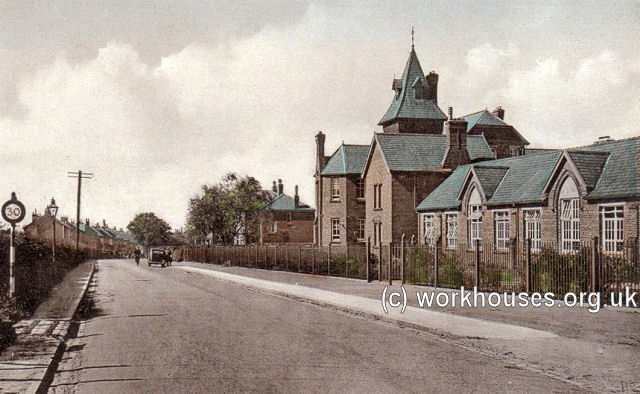
Former Ormskirk Union Industrial School from the south-east, 1930s.
© Peter Higginbotham.
Photo Album
The following collection of remarkable photos, dating from the early 1900s, paint a vivid portrait of the workhouse and its inmates and staff. They were kindly contributed by Betty Underwood, author of a book on the Ormskirk workhouse (details below).
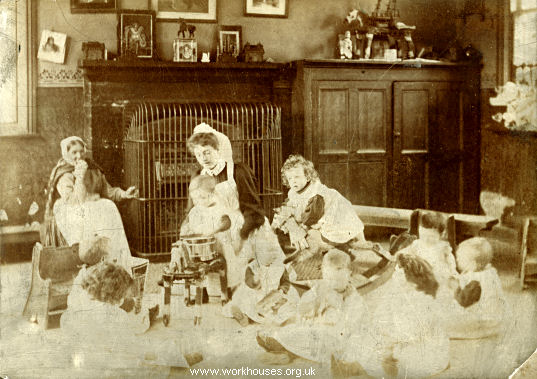
Ormskirk workhouse babies' ward, c.1900.
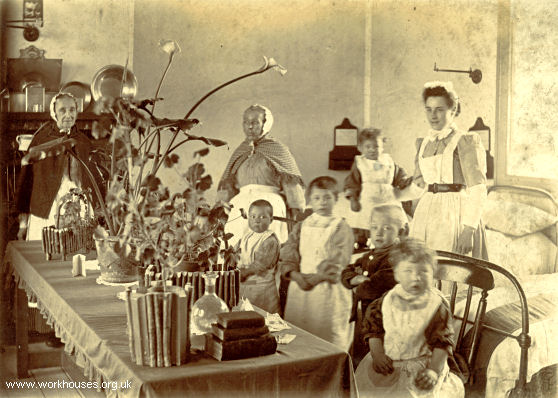
Ormskirk workhouse children's ward, c.1900.
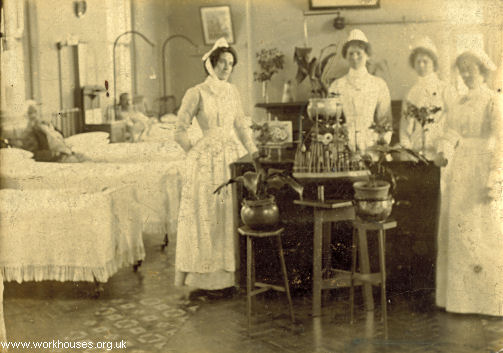
Ormskirk workhouse men's ward, c.1900.
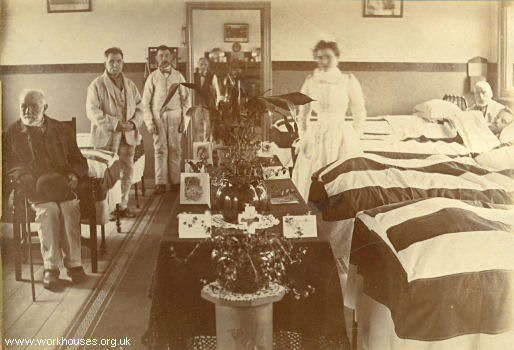
Ormskirk workhouse men's ward, c.1900.
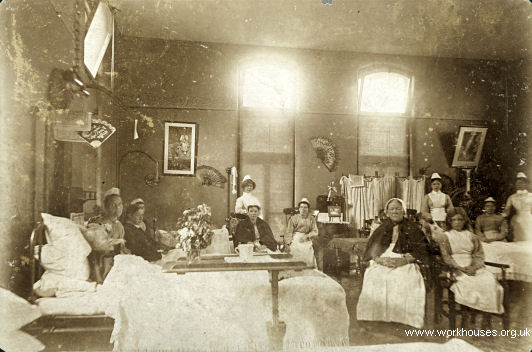
Ormskirk workhouse women's infirmary, c.1900.
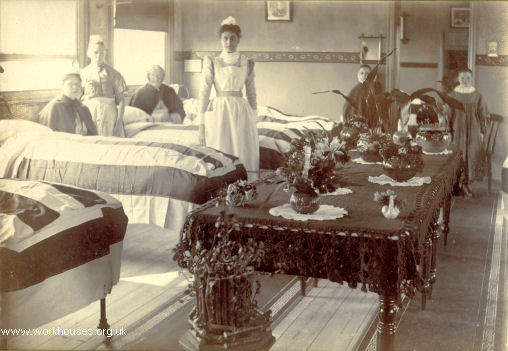
Ormskirk workhouse women's ward, c.1900.
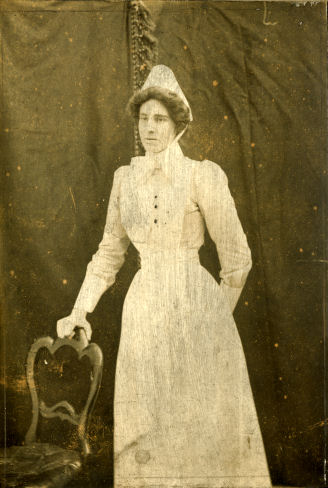
Miss Amy Masters, superintendent of women's ward, c.1900.
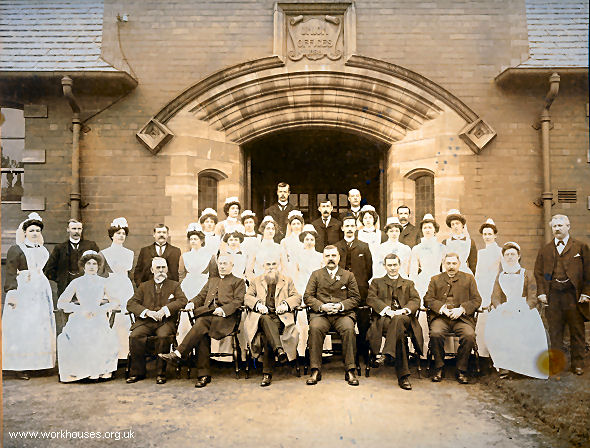
Ormskirk workhouse and Board members, early 1900s.
Staff
Inmates
Records
Note: many repositories impose a closure period of up to 100 years for records identifying individuals. Before travelling a long distance, always check that the records you want to consult will be available.
- Lancashire Record Office, Bow Lane, Preston, Lancashire, PR1 2RE. Holdings include: Guardians' minutes (1837-1930); Workhouse births and deaths register (1828-48).
Bibliography
- Underwood, Betty (2008) Ormskirk: Workhouse, Two World Wars, NHS Hospital (Raven Entomological and Natural History Society.) Now out of print but author can be contacted at battybellsATgmail.com (replacing the AT by an @ sign).
- The Ormskirk Workhouses (Manpower Services Commission, 1983)
- Hitchcock, T.V. (1985) The English workhouse: a study in institutional poor relief in selected counties. l695-l750. (DPhil thesis. University of Oxford.)
Links
- None.
Acknowledgment
- Many thanks to Betty Underwood for contributing the archive photos.
Unless otherwise indicated, this page () is copyright Peter Higginbotham. Contents may not be reproduced without permission.


